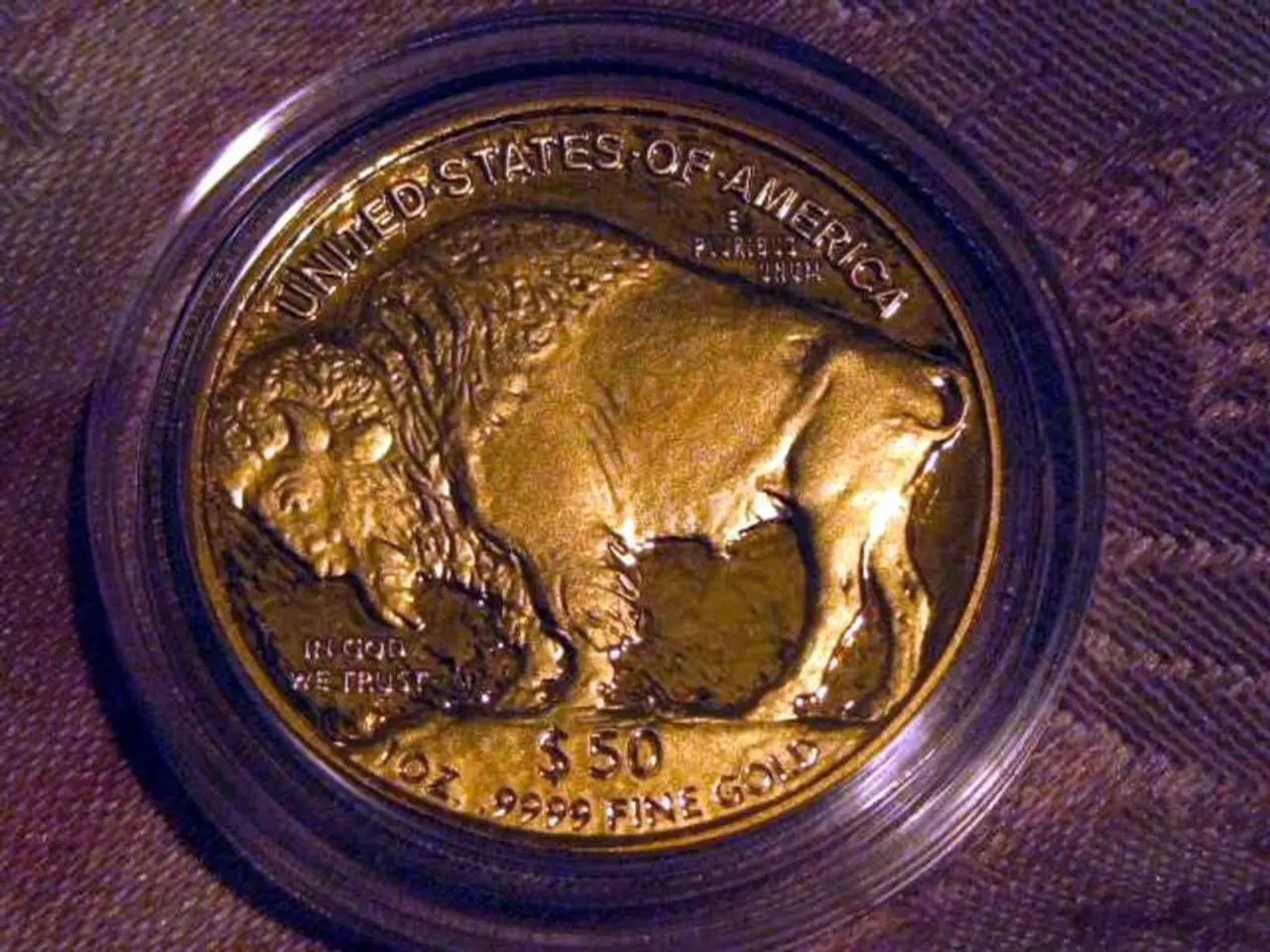Persistent devaluation of the US dollar, as per IMF's statement
The US dollar has been experiencing a significant depreciation since April, marking a shift from its traditional "safe haven" status [1]. This trend has been reported by Axios and has been accompanied by the strengthening of emerging market currencies [2].
The loss of the dollar's "safe haven" status can be attributed to a combination of factors. The implementation of tariffs has led to a front-loading of imports, causing a temporary surge in dollar supply and putting downward pressure on the currency [1]. Additionally, the aggressive unilateral tariff policies and talks of taxing foreign holders of US securities have increased policy uncertainty, eroding investor confidence in US assets [1][3].
Political and economic unpredictability within the US — including fears around trade and tax policies, debt ceiling negotiations, and questions about Federal Reserve independence — have further weakened investor sentiment towards the dollar [2]. Concurrently, macroeconomic data point to slower US growth, mild rises in unemployment, and subdued consumption, which reduce the appeal of dollar-denominated assets [2][4].
The Federal Reserve’s more gradual rate cuts compared to Europe also lessen the yield advantage of US assets, prompting investors to shift funds abroad [2][4]. This environment undermines the dollar’s traditional safe-haven role: the currency has decoupled from US interest rates and even declined while yields rose, a rare dynamic indicating weakening structural confidence [3][1].
Widespread doubts about US policy consistency and fiscal sustainability provoke reduced inflows into US government debt, fueling longer-term dollar depreciation [3][1]. The IMF attributes this trend to expectations of monetary policy easing in several emerging market countries [5].
However, it's important to note that the dollar's depreciation does not indicate a significant capital outflow from the US, according to current data on cross-border flows [6]. The depreciation of the dollar and the loss of its "safe haven" status are not directly linked to a decrease in interest in American assets, contrary to earlier assumptions [7].
The IMF expresses uncertainty about investors' long-term expectations for further dollar depreciation, as the global financial realignment benefits other currencies, especially in emerging markets where a weaker dollar alleviates pressures on dollar-denominated debt [2]. This trend further weighs on the USD as capital flows diversify away from it.
In summary, the dollar’s depreciation amidst tariffs and deficits reflects a complex interplay of temporary trade-driven dollar supply shocks, heightened US policy uncertainty diminishing investor trust, slower economic growth, less attractive interest rate differentials, and shifting global investment patterns—all contributing to a break with its historical safe-haven status [1][2][3][4].
[1] Axios. (2025). The US dollar is depreciating despite increased tariffs and a rising budget deficit. Retrieved from https://www.axios.com/us-dollar-depreciation-tariffs-budget-deficit-7d9ac73c-4498-49f6-b267-c67c7565935e.html [2] Financial Times. (2025). Political and economic unpredictability within the US. Retrieved from https://www.ft.com/content/39356a76-a7b1-4c8a-868b-2868c7944b5e [3] Bloomberg. (2025). Aggressive unilateral tariff policies and talks of taxing foreign holders of US securities. Retrieved from https://www.bloomberg.com/news/articles/2025-04-01/tariffs-and-taxes-on-foreign-holders-of-us-securities-erode-dollar [4] Reuters. (2025). The Federal Reserve’s more gradual rate cuts compared to Europe. Retrieved from https://www.reuters.com/article/us-usa-fed-ratecuts-europe-idUSKBN21U276 [5] IMF. (2025). The IMF attributes this trend to expectations of monetary policy easing in several emerging market countries. Retrieved from https://www.imf.org/en/News/Articles/2025/05/15/sp051525a [6] Bank for International Settlements. (2025). There is no evidence of a significant capital outflow from the US. Retrieved from https://www.bis.org/publ/work496.htm [7] Wall Street Journal. (2025). The increase in tariffs and budget deficit did not strengthen the US currency as expected. Retrieved from https://www.wsj.com/articles/tariffs-and-budget-deficit-did-not-strengthen-us-currency-as-expected-11617161867
- The decrease in investor confidence in US assets, due to factors such as tariff policies, fiscal sustainability concerns, and policy uncertainty, has led to a shift in finance away from the US dollar, impacting both education-and-self-development and general news sectors as the value of these offerings becomes less attractive to investors.
- The depreciation of the US dollar and loss of its "safe haven" status have also influenced the casino-and-gambling industry, as a weakening US currency can affect the spending power of foreign players and impact the profitability of international gaming ventures.




